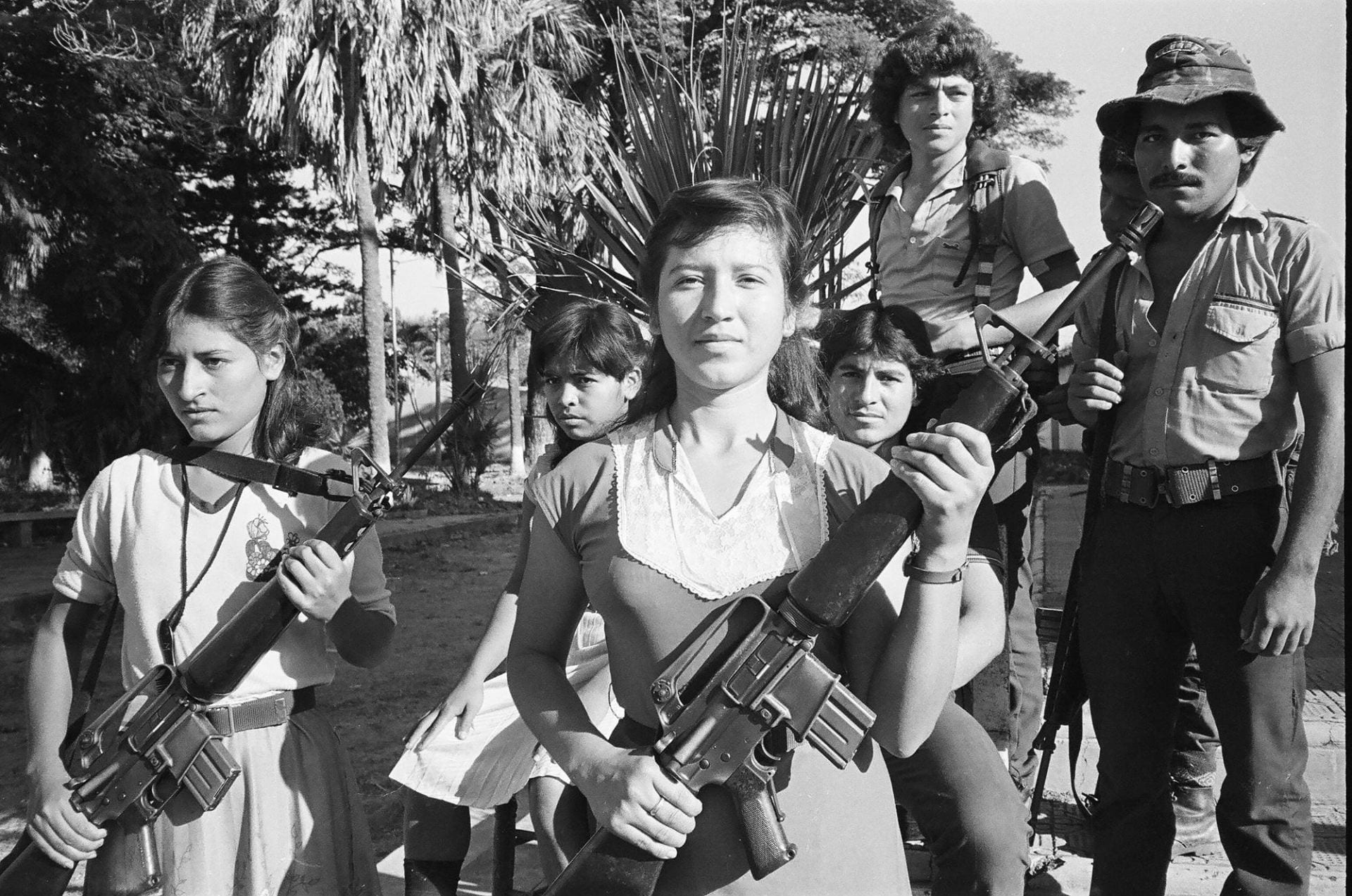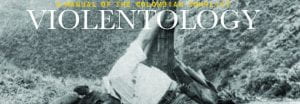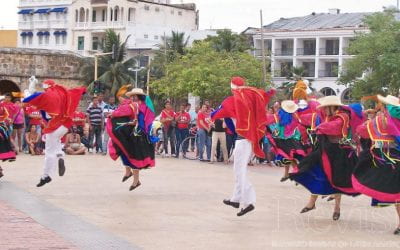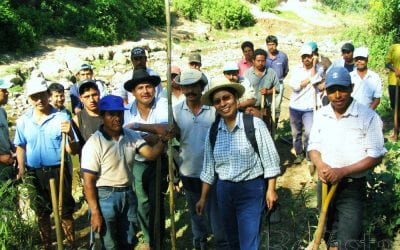Stephen Ferry was teaching a documentary photography workshop in Cartagena when he saw an image that revealed how very little he knew about violence in Colombia. The photograph depicted a town reduced to ashes after members of the National Liberation Army (ELN), a guerrilla group founded in 1964, blew up an oil pipeline. The experience was a negative epiphany that made him grasp the destructive impact that the Colombian armed conflict has had on the civilian population—not just on the armed actors. This was in the year 2000. The 21st century was getting under way, but Colombia was being dragged down by a series of wars that had lasted almost two centuries. The most recent episode of these drawn-out wars had been going on for fifty years by then and had displaced four million people, a number only surpassed in contemporary history by the events in Sudan.
The result of Ferry’s reflection on all types of victims is Violentology, a title that seeks to encompass the entirety of a very complex social and historic phenomenon. This book, without a doubt, will deepen and enrich the readers’ understanding of Colombia.
Ferry is a U.S. photographer who has covered conflicts and political and social change in a dozen Latin American countries. His previous book, I’m Rich at Potosí: The Mountain That Eats Men, depicted through his splendid photography the brutal reality of tin mining in Bolivia.
But Violentology goes several steps further than Ferry’s first book. Its ambition is monumental, not only in its historic and photographic scope, but also in its format and design.
An Image and a Thousand Words
Ferry’s images illustrate a prismatic vision of the war. In his book we meet the principal actors—the FARC guerrillas, the Colombian army, the paramilitaries, the drug traffickers, the politicians, the victims—all coiled together like a serpent that bites its own tail. The images help us visualize the conflict from different perspectives. Some photographs evoke compassion while others incite the reader to indignation with their graphic cruelty. Ferry is not only the author of most of these photos, but he is also the “curator” of a collection of images and documents that fill the gaps and deepen the insight of the “Colombian conflict,” a term which has generated great controversy, but which most of the so-called violentólogos agree upon.
Yet this is not a photography book. Or at least, it is not only a book of photography; it is so much more than that. Alongside the images, historian Gonzalo Sánchez recounts the history of the Colombian violence since 1948, when, sparked by the assassination of the charismatic popular Liberal Party leader Jorge Eliecer Gaitán, Bogotá was jolted and ransacked by the wrath of the populace, giving rise to the horrible period known as La Violencia (1948-1964).
As Sánchez’ narrative demonstrates, since then Colombia has not had one single day of peace. Successive governments violently repressed demands for social justice and sought to exterminate civil society’s organized groups, union and political leaders, indeed anything and everything that could be seen as a threat to the oligarchy that has governed Colombia since time immemorial, and viewed as a possible danger to powerful landowners, regional interest groups and international corporations.
The antagonism of powerful economic and social interests has converted the Colombian violence into a vicious circle in which each actor has a double who takes on the opposing role. The period of The Violence spawned the guerrillas; the guerrillas and the drug traffickers generated the paramilitary self-defense forces; these later allied themselves with the large landholders and the Colombian army; then the government and the army linked themselves with the United States through Plan Colombia.
The Colombian conflict is a never-ending story, so deeply enmeshed in the causes that originated it and continue to feed it that it can be manipulated by its protagonists, confusing its victims. In an interesting passage in the introduction, Ferry meditates on his encounter with a ventriloquist at a bar while he waited to be contacted by the FARC for the very first time:
[A] guerrilla ventriloquist is a good metaphor for the deceptive nature of this war. All parties use smoke and mirrors to hide their real motives, actions, and identities. From the use of multiple aliases to the mounting of elaborate theater pieces, the conflict is permeated with disinformation (p. 11).
What the Images Don’t Tell Us
As a book, Violentology tries to rectify a history that has been poorly understood by putting in its proper place each little piece of a huge jigsaw puzzle. The result is radically different from the official version and, of course, describes a web of corruption and interests that benefit politically and economically from the conflict.
The contribution of Gonzalo Sánchez is essential. His narrative sheds a light on the war’s key moments and intricate networks; he also reveals how all of the players in the conflict have lost sight of the reasons that justified their involvement. What do the FARC and ELN have to do today with the demands for social justice and the liberation struggles that inspired these groups in the 1960s? What has happened to the supposed ideal of autonomy of the self-defense groups when they gave up control to the drug traffickers and turned into armed squads for large landowners and corporations? Moral degradation, cruelty and mass atrocities have become normal practices for those who chose—or were forced to choose—war as a way of life.
The history of the Colombian conflict is characterized by its scorn for the rules of war established by international humanitarian laws. Violentology makes it clear that the massacre of the civilian population has been the norm and not the exception. Mutilations and dismemberment were practices used years before the creation of the guerillas by the bandit rebels of Colombia’s eastern plains, and these horrific practices in turn were adopted years later by the self-defense groups. With his alibi of fighting the FARC, the blood-thirsty Carlos Castaño, commander of the United Self-Defense Forces of Colombia, made the torture and martyrdom of a defenseless civilian population an everyday affair. He even provided his troops with training in dismembering live victims.
The depiction of infamy and pathological cruelty give one a lot to think about in this book. From decapitation to false positives—killing innocent civilians to claim enemy victories to get benefits like extra days off—the most surprising and terrifying aspect of Violentology is its demonstration of how all the protagonists adopt patterns of dehumanizing savagery. This is where the book gets it absolutely right—and in a compelling manner. Many of the forms of cruelty employed by these armed actors are cold, mechanical and strategically calculated. The self-defense groups used forced disappearances of civilians as a way of terrorizing and subjugating entire populations. But the guerrillas kidnapped and massacred thousands of innocent civilians; the narcos blew up thousands with their car bombs; and the army executed hundreds of young people from poor neighborhoods to make the public believe they were guerrillas.
In his introduction, Ferry apologizes to his Colombian friends for a book that is such a catalog of atrocities. Certainly, in the last few years, the country has made a great effort to clean up the image of a place plagued by terrorism and barbarity. Colombia is much more than the sum of its violences. And it is the cultural and historical richness of a people that have made it a nation and not merely a pandemonium. There is, however, a deep conflict that one cannot escape. Ferry quotes La vorágine, by José Eustacio Rivera, in which the author depicts the conflict of man with the barbarity that surrounds him. But la vorágine (the vortex) that emerges from Violentology is not the untamable nature that devours everything, but economic conflicts of interests and class that are the cause of an enormous inequality and injustice. It is important to remember, as Ferry and Sánchez point out, that Colombia is one of the few countries in Latin America that have not had an agrarian reform.
Sometimes evident sensationalism can render violence banal and turn it into a freak show. Despite the graphic imagery, this does not happen in this book. Much of this fact is due to the book’s design (Ferry designed it himself). The large size of the images brings the reader close to them. The use of newsprint gives the material an almost tactile feel. The combination creates a powerful sensorial effect. We are not only seeing a book in the most conventional sense but are transformed into witnesses of the events it reflects, and as such, we ourselves are living the violence.
The Warning
Violentology is framed within the historical parenthesis that extends from the origins of La Violencia to the current negotiation with the FARC, which offers the hope of ending fifty years of conflict. Sánchez concludes his introduction evoking some lines from the Colombian poet Gonzalo Arango, who prophetized that if Colombia is not capable of giving its children a dignified life, then its earth will continue to be soaked in blood, sweat and tears. In the epilogue of Violentology, journalist and former DRCLAS Visiting Scholar María Teresa Ronderos warns:
Being optimistic, one could say that after having reached the darkest abyss of the violence, we are now learning how to build a lasting peace … Still, our national leadership has to recognize that to achieve peace we need an ethical model of government. Only then, will we be able to look at this book and say that it shows a violent country of the past. (p. 174).
Readers might ask themselves, what made a foreigner come up with so much passion to denounce atrocities in a country that is not his own? Ferry belongs to an enlightened tradition presided by figures such as the Irish humanitarian and poet Roger Casement. He is originally from Cambridge, Massachusetts, where he witnessed the protests against the war in Vietnam. The photos then published in the press made it impossible to ignore the conflict in that faraway Southeast Asian country. Violentology is in keeping with that spirit: its aim is to keep the conflict in Colombia from being ignored. In this sense, his ambition has been achieved in an extraordinary and praiseworthy fashion.
Boris Muñoz, a Venezuelan journalist, is an Associate at DRCLAS. A 2010 Nieman Fellow and a 2011 Fellow at the Carr Center for Human Rights Policy, he writes frequently for such publications as Gatopardo and Newsweek.
Related Articles
Making a Difference: Displacement
Maria and I shared two things when I met her in Medellin, Colombia: name and age. However, even that was questionable, for her tired eyes and silvery wisps of hair made her look twice her age as she sank onto the crate opposite mine, the first time she had sat down all day. Seen in the flickering light of a few candles, heard over the steady beating of the rain against the tin roof of the shed, …
Investing in Latin America’s Water Factories
Trouble had been brewing in the Bolivian village of Santa Rosa for weeks. That morning, one of Serafin Carrasco’s cows had been killed, the neighbors angry that Serafin and his four colleagues were starting a watershed forest conservation program. “We should wait a few months for the tension to disappear,” the four others had agreed. Although alone in his determination, Serafin was in no mood to give up….
A Review of Reframing War and Local Conflict in Guatemala: Guatemala, la infinita historia de las resistencias
The collection entitled Guatemala, la infinita historia de las resistencias, represents a turning point in our understanding of that country’s turbulent and ultimately tragic late 20th century. Its eleven chapters—with the exception of two on the city—are dedicated to the core of the conflict: the indigenous countryside. Compiled by Guatemalan sociologist Manolo E. Vela Castañeda, the book definitively shifts the spotlight …





